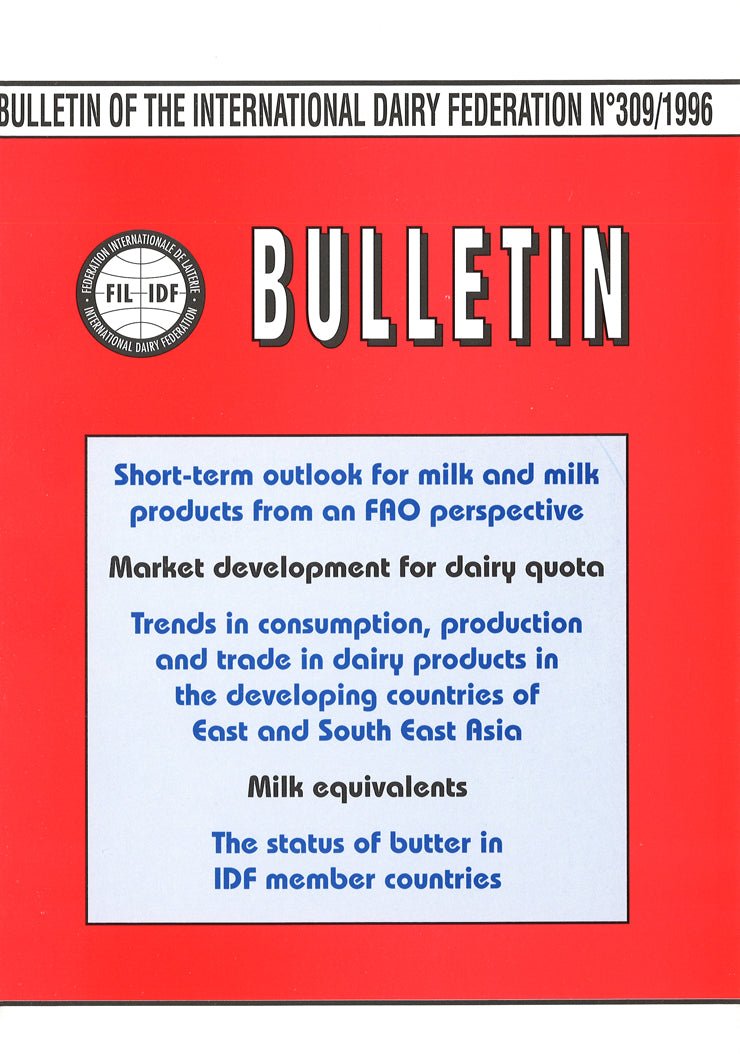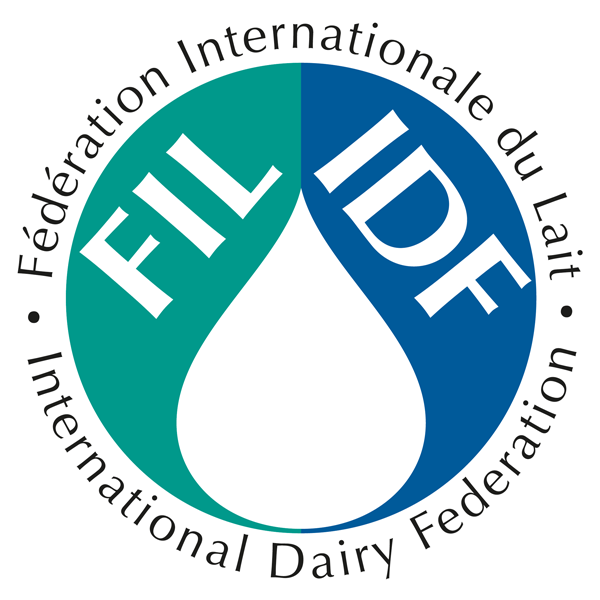Bulletin of the IDF N° 309/1996 - Short-Term Outlook for Milk and Milk Products from an FAO Perspective(Group C2 – Medium-term perspectives)
Couldn't load pickup availability
Document info
| pages | 44 |
|---|---|
| published date | 24 March 1996 |
| reference | Bulletin of the IDF No. 309/1996 |
Publication description
Short-Term Outlook for Milk and Milk Products from an FAO Perspective(Group C2 – Medium-term perspectives)
by M. Griffin (FAO, Italy)
An FAO short-term outlook for milk and milk products is presented. Provisional FAO estimates suggest that world output of milk from cows, buffaloes, camels, sheep and goats will reach 526 million tons in 1995, a similar volume to the previous year. Production in the developed countries is anticipated to decline as a result of lower output in the Commonwealth of Independent States (CIS) and eastern Europe. However, output is expected to continue to rise in the developing countries, growing by 2%, from 180 million tons in 1994 to 184 million tons in 1995, representing 35% of the world total. World prices for dairy products have risen substantially over the past 12 months. Price increases have been linked to stagnation in milk production in Europe and Oceania and to low stock levels. High prices are expected to be maintained during 1995 and this could limit import demand of some developing countries.
3 pp
Market Development for Dairy Quota – Report Presented to Commission C
collated by M. Morisset & D.-M. Gouin (Canada)
This paper represents the work of several authors who have attempted to describe the quota transaction system in their respective countries - Canada, Denmark, Germany, Japan, Norway, United Kingdom. It seeks to give the reader a better understanding of the marketing of milk production quotas, used by some 15 countries to manage their milk production sectors.
17 pp
Trends in Consumption, Production and Trade in Dairy Products in The Developing Countries of East and South East Asia
Prepared for FAO/IDF Consultation on Dairy Economic Trends, Rome, 11 May 1995, by M. Griffin (FAO, Italy)
Developments in consumption, production and trade in relation to the dairy sector are broadly outlined. It is seen that both domestic production and imports have been stimulated by a combination of factors – economic development, diffusion of eating habits from other regions of the world – which have led to a growth in the consumption of milk and milk products in the countries discussed.
6 pp
Milk Equivalents (Group C3 - Dairy economics & statistics)
by E. Richarts (Germany) & P. Mikkelsen (Denmark)
Milk equivalents are often used to describe international supply, demand, and external trade of dairy products in comprehensive figures. In most calculations, a wide range of dairy products is pooled into a few major groups. Within each group, one single figure (milk equivalent) is used to estimate the amount of milk used to produce the given amount of dairy products. Summation across groups then provides the total amount of milk used in the production of all dairy products. This, of course, is a simplification of the always far more complicated reality.
Determining the “correct” milk equivalent figures has often been up for discussion. This paper aims at providing an overview of various commonly used milk equivalent figures, the rationale behind using these figures and the differences obtained by using different milk equivalents. The different methods of compiling milk equivalent figures can be based on:
(1) The butterfat method
(2) The solids content method
(3) The non-fat solids content method
(4) The combined butterfat and non-butterfat solids method.
Examples of each method are provided. Each method provides different milk equivalent figures and, therefore, different estimates of the total amount of milk used. An explanation of each method is provided.
6 pp
The Status of Butter in IDF Member Countries
by A. Krijger, I. Smit & M. Voorbergen (Netherlands)
An IDF Questionnaire, “Yellow Fats with Special Reference to the Consumption of Butter”, was sent to 25 National Committees of the IDF, 19 of whom responded. The results are divided into the following sections: consumption patterns; competing products and prices; distribution structure of butter and margarine; promotional expenditures on butter, margarine and blends; health concerns; various issues. It is concluded that consumption developments still give cause for concern, but the future looks brighter than before and, with the help of the marketeers ans sufficient financial support, butter can find its position as a successful natural quality product.
9 pp


